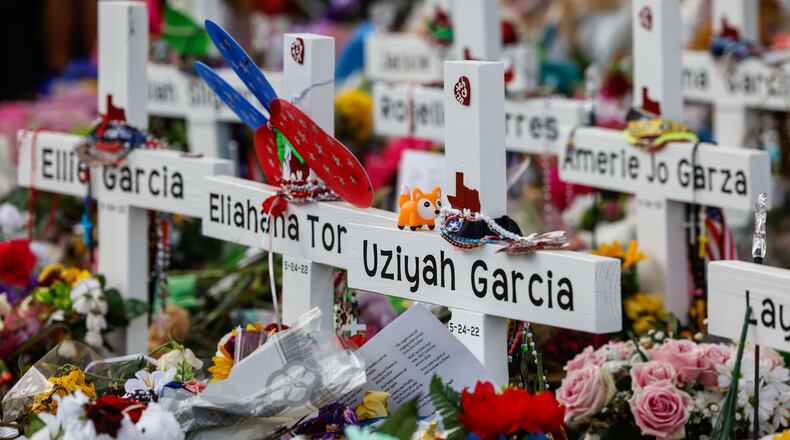After a school shooting, Georgia politicians always fall back on the response scripted by the gun lobby: The solution to guns in schools is more guns in schools.
Usually, lawmakers propose more armed guards present in school buildings, despite research that tells us armed officers don’t lessen deaths and injuries. Under a recent proposal announced by Georgia Lt. Gov. Burt Jones, the solution is giving guns to teachers.
At a Barrow County elementary school, Jones called for offering public school teachers a $10,000 annual stipend to take voluntary firearms courses and pack heat in their classrooms. “It’s sad, but it is the sign of the times that we have to go to these lengths to protect our children, but it’s just where we are,” said Jones.
Teacher task lists are already overwhelming. We’ve asked them to take on mental health counseling in the wake of the COVID-19 pandemic. We’ve told them to monitor online bullying among students even though those social media exchanges occur after school and on weekends. When teens attempt suicide, we question whether schools missed signs. After businesses complained young people lack soft skills, teachers turned into etiquette coaches, training kids in social niceties once assumed to be the province of parents, from offering firm handshakes to making eye contact.
Now, we want teachers to both raise reading scores and loaded pistols on behalf of their students.
Jones leads a chamber in the General Assembly that spent the last year critiquing schools for failing to follow the evidence about how best to teach kids to read. This year, the Legislature passed a law requiring public schools to teach reading and writing based on a vast body of research referred to as the “science of reading.”
If only the General Assembly would follow the evidence in stopping school shootings.
Researchers at The Violence Project examined 133 school shootings and attempted school shootings between 1980 and 2019. The presence of an armed guard did not reduce the severity of injuries. The 2021 study found “armed guards were not associated with significant reduction in rates of injuries.”
In fact, the rate of deaths was nearly three times greater in schools with an armed guard present. That may be because many school shooters — often students at the school — are suicidal and plan to die in the act. They don’t fear someone returning fire; they count on it.
A study published this summer examined the impact on school safety from armed school resource officers. Delving into federal data from 2014 to 2018, University of Albany and the Rand Corp. researchers found SROs reduce some forms of violence in schools, but do not prevent gun-related incidents.
In its 2019 report “Protecting America’s Schools,” the U.S. Secret Service found school shootings are often over before law enforcement can act: Two-thirds lasted for two minutes or less, and nearly half of the attacks ended within one minute. As James M. Murray, then director of the Secret Service, wrote in the preface to the report: “Because most of these attacks ended very quickly, law enforcement rarely had the opportunity to intervene before serious harm was caused to students or staff. Additionally, many of the schools that experienced these tragedies had implemented physical security measures — cameras, school resource officers, lockdown procedures. Prevention is key.”
While the lieutenant governor talks about going to new lengths to safeguard students, he ignores the more effective route to protecting them — preventing guns from entering schools in the first place. In the last few years, Gov. Brian Kemp and the Republican-dominated Legislature have made it easier to buy and carry firearms in Georgia.
School shootings remain a uniquely American horror, enabled by lax gun laws that have led to 393 million guns held in civilian hands. The National Institute of Justice found that from 1966 to 2019, 77% of mass shooters obtained the weapons they used through legal means.
In Pew Research Center survey results released this fall, only 24% of parents with children under 18 said arming teachers and school administrators would be a very or extremely effective approach to prevent a shooting. In a Rand Corp. survey this year of teachers, 54% felt equipping them with guns would make schools less safe.
We saw the risks of arming teachers in April when a fifth grade teacher at a DeKalb school left a loaded gun inside a faculty restroom. Two months earlier, a West Central Texas superintendent resigned after parents discovered his gun was found in a school bathroom stall by a third grader. Parents were also upset to learn that the teacher, when alerted about the gun by a student, sent another boy back to the restroom to verify the gun was real.
About the Author
The Latest
Featured



